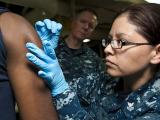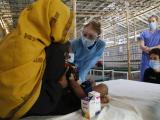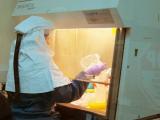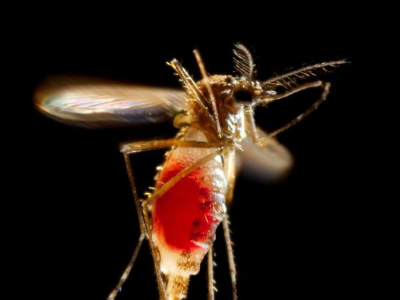Findings from researchers at Northwestern University's Feinberg School of Medicine may offer physicians further help in quickly and accurately distinguishing early inhalational anthrax from other respiratory conditions—a vitally important skill if a widespread anthrax emergency were to occur.
The scientists, whose report is published in the Jul 31 issue of The Lancet, found that the definitive predictor of inhalational anthrax was the chest radiograph. The presence of mediastinal widening or pleural effusion was 100% sensitive (95% confidence interval [CI], 84.6-100.0) for inhalational anthrax, 71.8% specific (CI, 64.8-78.1) for inhalational anthrax when compared with community-acquired pneumonia (CAP), and 95.6% specific (CI, 90.0-98.5) for inhalational anthrax compared with influenza-like illness (ILI).
The matched case-control study involved 47 historical cases of confirmed inhalational anthrax, 36 of them naturally occurring from 1880 through 1976 and 11 of them from the 2001 anthrax attack, and 376 cases of CAP or ILI seen in the emergency department of Northwestern Memorial Hospital, Chicago, between January 2000 and February 2003.
Before comparing the anthrax patients with the controls, the authors compared laboratory, chest radiograph, and autopsy findings between the naturally occurring and the bioterorrism-related anthrax cases and found no significant differences. "The chest radiograph findings of the two case groups were remarkably similar," according to the authors. An accompanying commentary points out that the similarity of the two anthrax groups suggests that "the weaponisation process might not influence disease progression." The anthrax spores used in the 2001 attack were electrostatically charged to make them more easily dispersible, and they were covered with polymerized glass and silica to prevent clumping.
In addition to the chest film findings, additional clinical characteristics found in the study to be more common in inhalational anthrax patients than in those with CAP or ILI included nausea, vomiting, pallor or cyanosis, diaphoresis, altered mental status, and elevated hematocrit levels. Similar results have been reported in other studies, but the authors of the present study point out that they included substantially more anthrax cases and used matched controls for comparison.
The authors acknowledge several limitations of their study, including the fact that because they used historical reports for the anthrax cases, their measurements of predictor variables are "inherently incomplete." That they found such clear similarity between the naturally occurring and the more recent, more completely documented bioterrorism-related cases may dispel this concern somewhat, however. They also point out the possibility of misclassification of some of the CAP and ILI controls in their study. Finally, they note that clinical characteristics of inhalational anthrax may be subtle or even absent early in the disease, which could have affected the results. Because of these limitations, "Studies using prospectively colleced information from controls should be done to corroborate, modify, or refute our findings," they conclude.
Kyriacou DN, Stein AD, Yarnold P, et al. Clinical predictors of bioterrorism-related inhalational anthrax. Lancet 2004 Jul 31;364(9432):449-52 [Abstract]
See also:
CDC document on distinguishing ILI from inhalational anthrax (Nov 9, 2001)
http://www.cdc.gov/mmwr/preview/mmwrhtml/mm5044a5.htm
CDC interim guidelines for clinical evaluation of suspected anthrax cases (Nov 2, 2001)
http://www.cdc.gov/mmwr/preview/mmwrhtml/mm5043a1.htm
Article in Feb 1, 2003, Clinical Infectious Diseases: "Clinical features that discriminate inhalational anthrax from other acute respiratory illnesses"
http://www.journals.uchicago.edu/doi/full/10.1086/346035


















